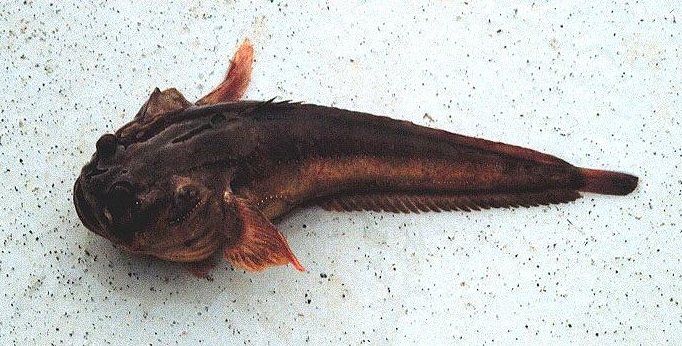Form and Function
Imagine you have just rented a houseboat for a week in sunny California. Life seems grand and the boat is your private paradise. Until nighttime, that is. People living in houseboats in Sausalito, California have reported hearing a mysterious humming noise which keeps them up at night (Bishop, 1989). The culprit is none other than Porichthys notatus, the Plainfin Midshipman fish. Exaples of its’ audible hum can be heard by clicking here. The hum is produced as a mating call, created by a modified swim-bladder (Forbes et al. 2006). The purpose of the Plainfin Midshipman’s hum is related to the mating process which is discussed in the life history/reproduction page. It is able to sense the call of other males, which causes heightened levels of auditory excitement in its brain (Petersen et al., 2013).
As is described in the
habitat and geography section,
Porichthys notatus is a ray-finned fish which uses its fins in
order to swim. It has found ways to survive in its non-mating
deep-ocean habitat. The photophores which line its body,
described on the
nutrition/physiology page, are used during
courtship, but also as a means of protection. The fish will
counterilluminate, eliminating its silhouette from being seen by
predators (Harper and Case, 1999).
during
courtship, but also as a means of protection. The fish will
counterilluminate, eliminating its silhouette from being seen by
predators (Harper and Case, 1999).
As mentioned in the life history/reproduction page, P. notatus may become stranded out of water when the tide goes out. It has adapted to this very real possibility, and is able to respire oxygen (Fitzpatrick et al., 2009). Even its’ sperm have adapted, and are able to swim faster in low-oxygen conditions compared to normal-oxygen conditions (Petersen et al., 2009).
P. notatus is an important model organism for the study of speech and hearing. It is able to stiffen its inner ear hairs while vocalizing, causing decreased hearing (Bass et al., 2005). This process is probably not helpful for studying speech and hearing of tetrapods, because it is not a process shared by all vertebrates (Bass et al., 2005).
Click
here to go back to the Life History & Reproduction page
Click
here to go to the References page
